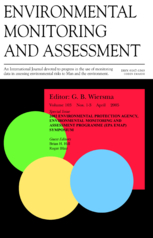Bláha M, Weiperth A, Patoka J, Szajbert B, Balogh ER, Staszny Á, Ferincz Á, Lente V, Maciaszek R, Kouba A. 2022. The pet trade as a source of non-native decapods: the case of crayfish and shrimps in a thermal waterbody in Hungary. Environmental Monitoring and Assessment 194(10): 795. https://doi-org.libaccess.lib.mcmaster.ca/10.1007/s10661-022-10361-9
Abstract
Ornamental aquaculture and the related pet industry are known to be important sources of non-native species worldwide. In the temperate zone, thermal waterbodies are attractive places for irresponsible owners to release unwanted freshwater pets including decapod crustaceans. Several non-native ornamental species have been reported in the thermal locality of Miskolctapolca (a suburb of Miskolc, Hungary). So we surveyed this site in March 2019–November 2021 to update local occurrence records and detect potentially newly released species. A well-established population of Neocaridina denticulata and the occurrence of Caridina cf. babaulti had previously been noted. However, for the first time at this site, we found the shrimps Atyopsis moluccensis, Caridina gracilirostris and C. multidentata, as well as the crayfish Procambarus virginalis, P. clarkii, Cherax quadricarinatus, C. boesemani and C. snowden, and several formally undescribed Cherax species originating from New Guinea. Furthermore, in most species, gravid females carrying eggs were also noticed. Three shrimps, A. moluccensis, C. gracilirostris and C. multidentata, were recorded for the first time in European wild. Further monitoring of this locality and better education of the general public regarding the risks associated with the release of non-native species are strongly recommended.
Keywords: Ornamental species • invasive species • Decapoda • Europe • thermal water







No comments:
Post a Comment